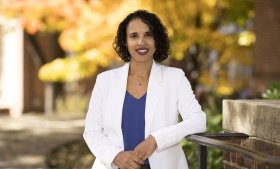News & Stories
The stories of the Faculty of Arts and Sciences: the achievements and activities of our faculty, departments, and programs.
Search & Filter
-
Daut, Professor of French and Black Studies, is one of three finalists for this year's prestigious history prize.

-
Devoret, Frederick W. Beinecke Professor Emeritus of Applied Physics, had to be persuaded by his family that he had, indeed, won.

-
Pieter van Dokkum, Sol Goldman Family Professor of Astronomy and Professor of Physics, led the analysis and coordinated the follow up program.

-
An international team including David Evans, Professor of Earth and Planetary Sciences, may have solved a magnetic field mystery contained in 565-million-year-old rocks.

-
AISES (American Indian Science and Engineering Society) is an organization dedicated to advancing Indigenous representation in STEM fields. Pyle has stepped up as Yale’s chapter advisor, supporting the students through funding guidance, networking, and constant encouragement.

-
A research partnership between Yale and the University of São Paulo (USP), led by Professor of Earth & Planetary Sciences David Evans, is advancing new understanding of Earth’s early geological history.

-
In a Q&A, Assistant Professor of Film and Media Studies Neta Alexander discusses her new book, an examination of the frictions between digital interface features and the human body, both abled and disabled.

-
This edition of Humanitas covers performances inspired by the scholarship of Elise Morrison; Emily Coates' upcoming world premiere at Guggenheim New York; and a short story collection by English lecturer Derek Green.

-
From the lecture hall to the FTC’s courtrooms, from tech giants to housing markets, Sterling Professor of Economics Steve Berry’s work has left a deep imprint on the field of economics.

-
A 2025 Nobel Prize in Physics has been awarded to Yale Professor Emeritus of Applied Physics Michel Devoret – who holds a secondary appointment in Physics in the FAS – “for the discovery of macroscopic quantum mechanical tunneling and energy quantization in an electric circuit.”
